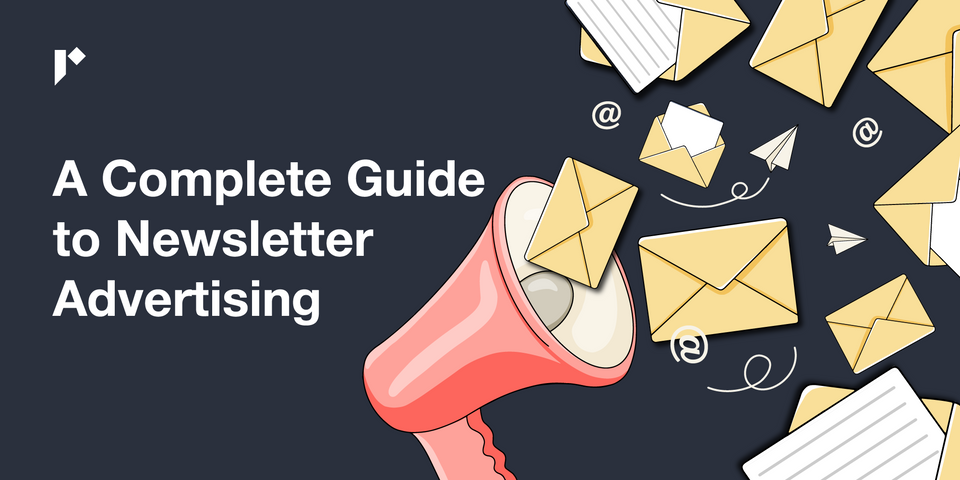Wouldn't it be great to get your business noticed by thousands of new people in your target audience? Even better, if you attract their attention without making expensive TV commercials or sweating over social media ads.
Advertising in newsletters is becoming one of the most effective ways your brand can reach potential new customers today. That's because individual newsletter publishers don't try to please everyone on the internet. Instead, they create or curate information that appeals to a specific group of readers.
So, advertising your product, newsletter, podcast or business in the right newsletters could be just what the doctor ordered for your marketing campaign.
Table of Contents
What is newsletter advertising?
We're not talking about email marketing here.
Email marketers send dedicated emails focused on getting people into a sales funnel. Marketing emails are all about selling products to people already. on your mailing list. You've probably had thousands in your inbox over the past year or two.
With newsletter advertising, aka email advertising, your brand can leverage someone else's email list by buying ad space in their newsletter.
Benefits of advertising in newsletters
You're getting in front of highly interested audiences. Provided you've chosen the right newsletters (we'll get to that), people will welcome the chance to learn about other valuable products, services or information in that niche.
- Newsletter subscribers are more likely to SEE your ad. Ad blindness or banner blindness is an actual thing. When you use google ads (or other advertising channels) many eyes will slide right over your advertisement, no matter how sound your services might be. Newsletter advertising usually fits the publication style, so it seems like part of the email (although always acknowledged as an ad or sponsored content.)
- Email lists use first-party data, i.e., names, email addresses and other information they've collected with subscribers' permission, as opposed to third-party data, which is tracked all over the internet.
- Emails don't use cookies. According to this article, third-party cookies will soon be a thing of the past, which could hurt many traditional marketing campaigns. (That won't concern your business if you've secured ad space in carefully-chosen newsletters.)
- Newsletter readers are real people. Bots or scammers can't open email newsletters; they're read by genuine subscribers.
Types of newsletter ads
If you subscribe to newsletters that include paid advertising slots, you've probably seen several different ads featured.
Display advertising
It's usually quite obvious that custom display ads (sometimes called banner ads) are separate from the newsletter's original content. They grab attention with images and text and can be placed anywhere in the newsletter.
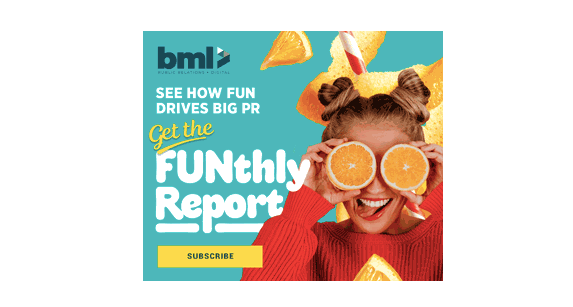
Native ads
These ads are included in the body of the email. They are designed to be similar to the newsletter's format, so they don't interrupt the content flow.
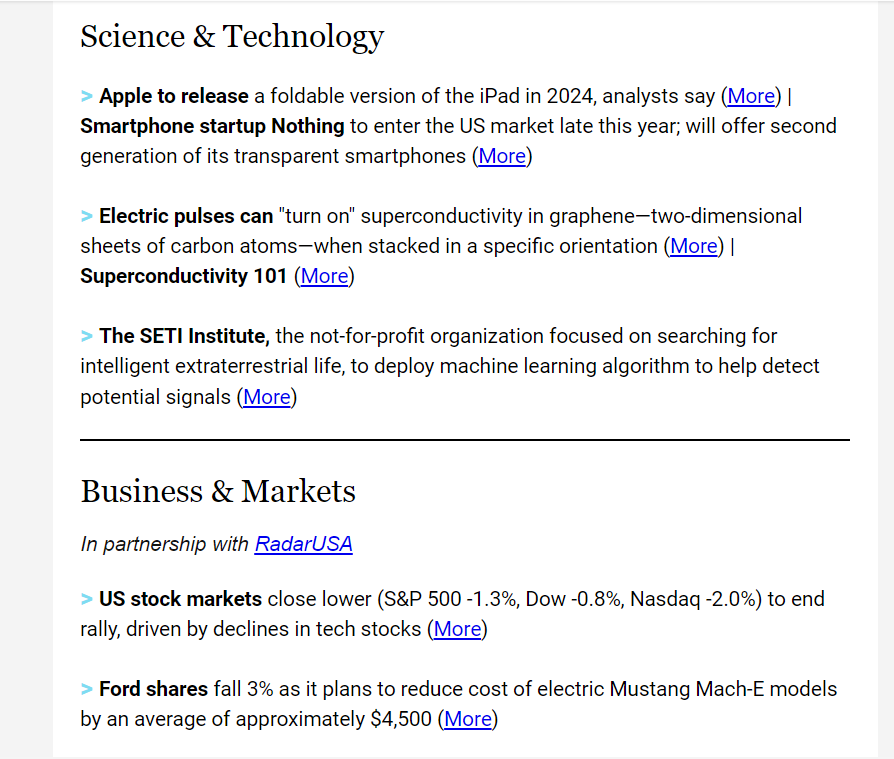
Dedicated emails
These emails are dedicated to you and your product or business. You write the ad copy, but the publisher sends them to their subscribers as newsletters. Dedicated emails can be very effective but cost much more than other advertisements.
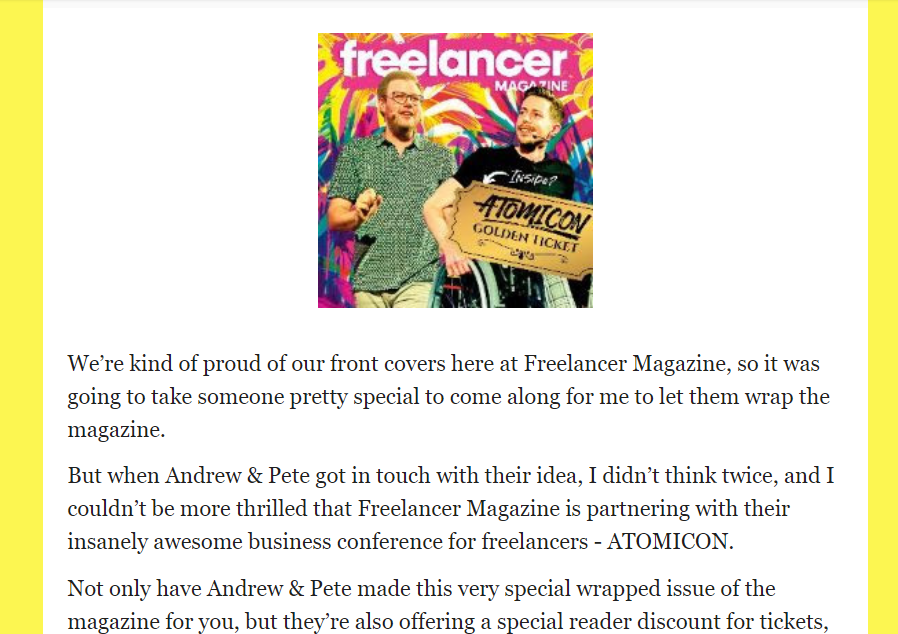
What kind of ad should you choose?
Consider these factors:
- What you aim to achieve through newsletter advertising
- The newsletter inventory (i.e., how much advertising space the publisher has available, and the variety of ad placements they offer)
- The cost of one ad vs. a package deal
- How many ads you're planning to buy.
Many newsletter publishers will have a media kit explaining their newsletter ad format, audience demographics, number of subscribers, open rate, testimonials and cost structure.
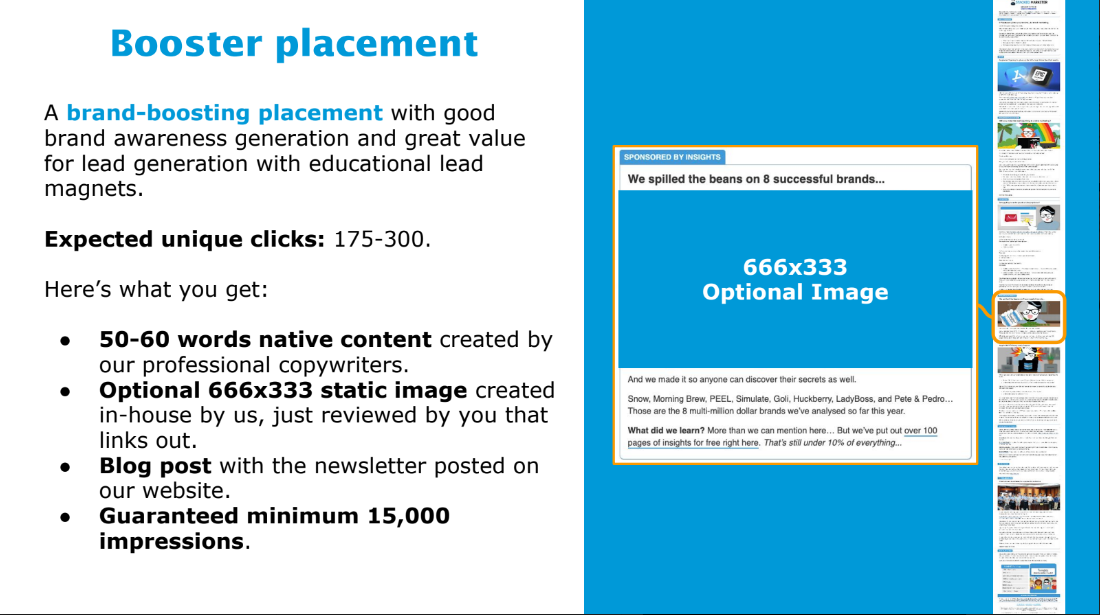
What to put in your ads
Good copywriting is as vital for newsletter advertising campaigns as ads on other channels. Your ad needs original content to capture readers' attention and entice them to learn more.
Some businesses design their ad links to a sign-up page or website; other brands send potential new customers to a dedicated landing page.
Landing pages work well because they:
- focus attention by only providing information about the product or service offered in the link
- convert customers with one call to action (repeated several times on the page)
- keep track of traffic coming from newsletter advertising campaigns
- are well suited to A-B testing.
(You'll find more info about writing effective landing pages in this article from WSI.)
How to find newsletters to advertise in
Newsletter advertising works best when the newsletter readers fit your ideal audience description. In other words, paying for email ad space in a marketing newsletter is useless if your perfect audience is returned service people. Similarly, suppose you're targeting young, first-time founders. In that case, you might have more success with a newsletter in the finance, marketing or technology niches than one that deals in arts & crafts.
Research newsletters in your niche
Reletter is your go-to newsletter database. Use Reletter to find partners with readers who'll click the link in your email newsletter ad because it's exactly what they've been looking for.
Search in your primary niche, but look in adjacent niches too. Perhaps your young founders are also first-time parents. Then you might consider advertising in parenting newsletters focusing on parents working from home and work-life balance for young parents.
Using Reletter you can:
Check out their stats
The Reletter database shows the newsletter title, the number of subscribers and info on audience demographics. It shows the newsletter provider (ConvertKit, Mailchimp, Substack, LinkedIn etc.), whether it's a free or paid newsletter, publishing frequency... in fact, almost every stat you'd wish for when searching for newsletters.
Look at previous issues
Use Reletter's links to a newsletter's back catalog to review previous issues. Reading the newsletter gives you a feel for their service, writing style, and ad inventory. It helps to understand who the other advertisers are and compare their business and likely audiences with yours. Ideally, you'd see some crossover and potential for standing out from the crowd.
Check their social media presence
Reletter includes social media links so you can glean info from the newsletter's activity and audience on social channels. Subscribers may form an active community on social media or leave comments and testimonials about the newsletter's value in their business or personal lives.
Find similar newsletters
When you find a likely partner, Reletter streamlines your search by providing information and links to similar newsletters. That means you don't have to start from scratch when thinking about your subsequent email advertising campaigns.
Newsletter advertising rates
Newsletters generally sell ad space via fixed rates or CPM (cost per mille or cost per thousand subscribers.)
A typical email CPM is between $10 and $30 but rates depend on the newsletter ad format and placement within the newsletter. Display advertising has premium charges because the distinctive ads are placed in a prime position - either first or near the top of the newsletter.
Native ads are set further down the email and usually confined to a few lines of text without images. Consequently, they cost less than display ads but more than snippets (a line or two of click-worthy text and a link at the end of the email.)
Subscriber numbers and proven click rates are other factors that influence newsletter advertising rates. Smaller newsletters will charge less for ads than established ones with massive subscriber numbers.
Newsletter advertising may also be offered as a package deal. That could be multiple ads (i.e., one ad placed in several issues) or include social media coverage, as in this example from Stacked Marketer.
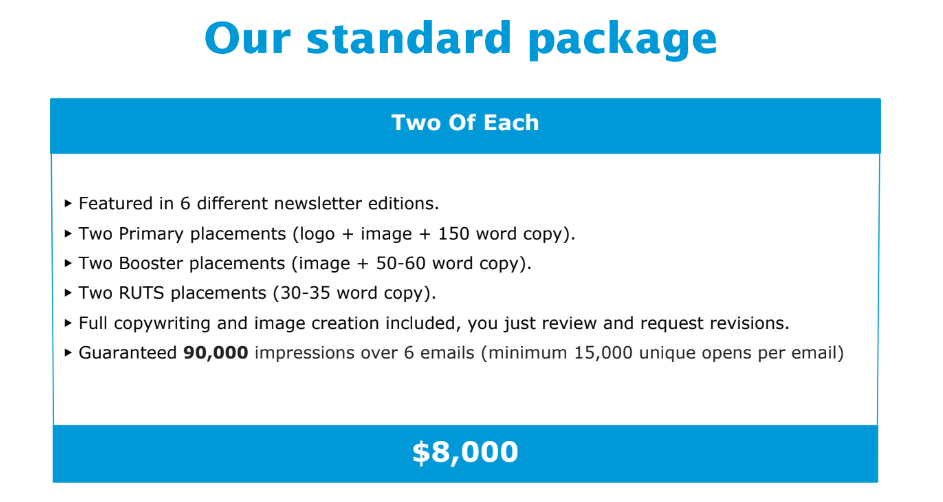
How to pitch newsletters
Get the correct contact info
You need names and addresses to reach out to suitable newsletters.
Reletter provides a website URL, a direct newsletter URL and email contacts for each newsletter in the database, as well as publishers or bylines.
Personalize your pitch
Unlike some other advertising channels, newsletter publishers can be very choosy about their advertisers. You're looking for a good fit, and so are they, because email advertising is a source of extra income for them. However, advertisers should also offer a valuable service to interested readers by alerting them to exciting or helpful products in their niche.
Try Reletter for free and get a access to a range of winning pitch formats. Find one that fits your style, then adjust it for different newsletters so that it becomes a unique letter to each publisher.
How to measure campaign success
Your campaign goals will determine how you measure your success in newsletter advertising.
You might track:
- Click rates (how many readers clicked the link to your landing page or website?)
- Visits to your landing page may come from readers who noted your ad but didn't click the link at the time.
- Conversions - how many people subscribed to your newsletter, bought your book or signed up for your course?
- Visits through a one-question survey - e.g., "how did you hear about us?"
- CPA - cost per acquisition (how much it costs to get one customer from the ad to the point of sale), which is calculated by the cost of campaign/conversions. E.g., total cost $2,000 ÷ 200 conversions = $10 per customer.
Final thoughts (TL;DR)
Newsletter ads are an effective way to alert new interested audiences to your product or services. They avoid the stigma of third-party cookies and ad blockers because readers directly invite the newsletter into their inboxes.
Most of us are becoming increasingly wary of spam, and we don't give our email addresses out lightly. So, newsletter publishers are careful to keep their email lists secure. They send information and articles of value to their subscribers and carefully choose advertising partners to suit their audiences.
Newsletters are rarely filled with ads. You'll often see only one or two display ads that are highly visible and separated from the rest of the content. Or, the newsletter advertising may be all native ads that fit almost seamlessly into the newsletter's style by using the same font and layout.
Reletter is a newsletter database featuring comprehensive information on thousands of newsletters found on Substack, LinkedIn, and other email providers. Some are written by brands, and others by solopreneurs, authors or small businesses.

